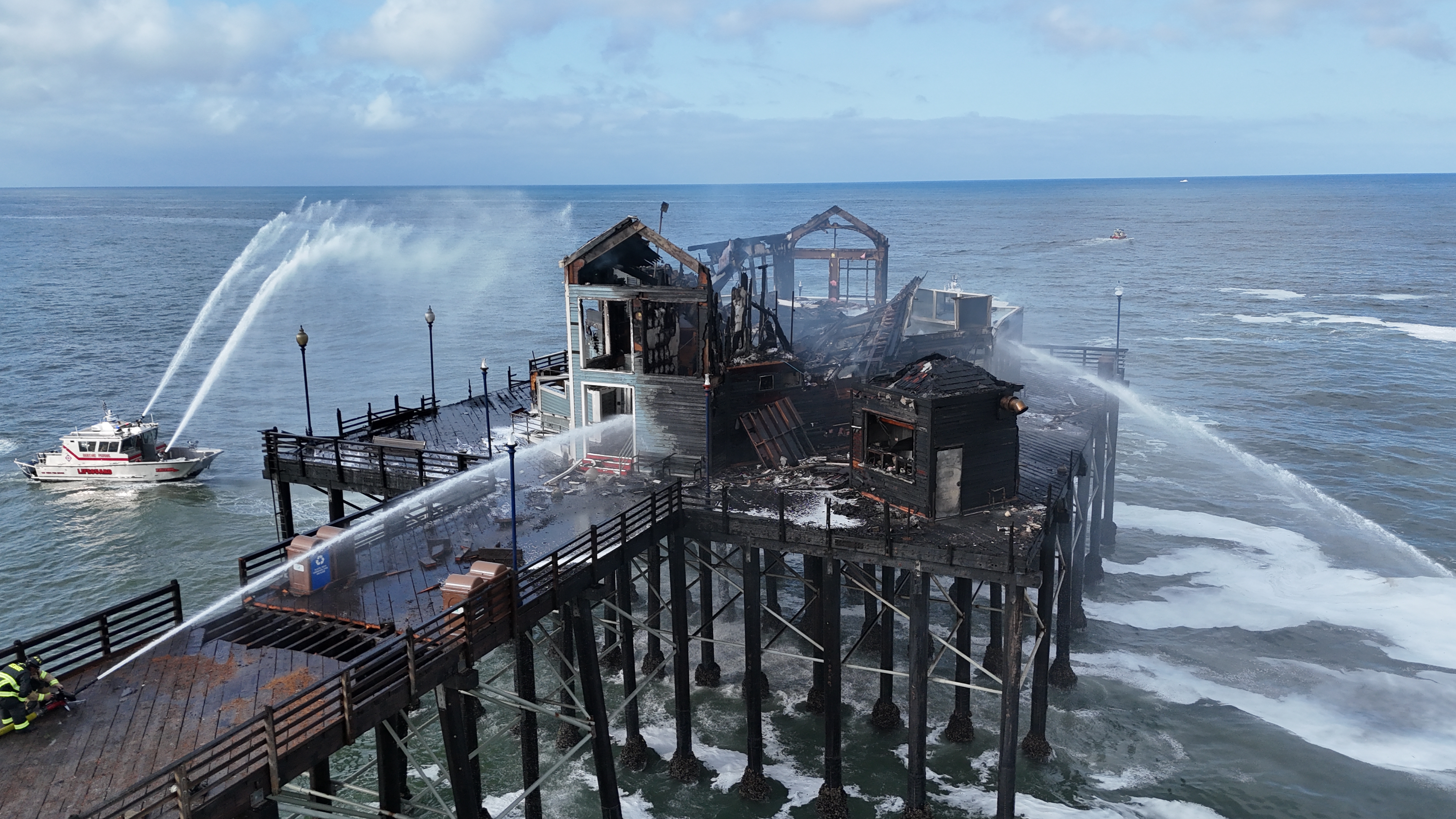When Jay Galazin woke up for work on Thursday, he did not expect it to lead him to Oceanside.
“There was no way we anticipated that we were going to be fighting a fire on such an iconic part of the community’s shore,” Galazin said. He is a Master Chief with the U.S. Coast Guard and has served for 27 years.
Galazin told NBC 7 that he and his crew on USCGC Sea Otter were doing routine patrol and were about 15 nautical miles from the pier when they spotted signs of trouble.
More Oceanside Pier fire coverage:
Get San Diego local news, weather forecasts, sports and lifestyle stories to your inbox. Sign up for NBC San Diego newsletters.
“I just saw this massive plume of smoke, and we looked at our camera, and I zoomed in,” Tanner Trew, a USCG Seaman said. “Initially, we thought it was just a building fire.”
Trew added it looked like a “very significant fire.” It only took moments for them to get a call from their command to assist with a fire on the Oceanside Pier.
“The closer we got, you could just see those flames and smoke billowing out,” Antonio Vallabriga, a USCG Fireman, said.
As Master Chief, Galazin was in charge of everyone on the cutter that day. He navigated the vessel within two feet of the pier’s pilings to give the crew the best angle to attack flames, but it was not an easy feat.
“When we got there, it was just a matter of, it was a lot of wind and a lot of seas, and our boat is actually affected by that a lot more than the small boats are,” Galazin said. “So it was just trying to figure out what the best way for us to integrate the best.”
On top of that, Galazin said that this is not something the Coast Guard typically prepares for. They train extensively for fire fighting situations on their own, or sometimes other, vessels, but rarely on structures.
Never on piers.
“The biggest thing the Coast Guard trains us to do is be flexible and have initiative,” Galazin said. “Every emergency you find at sea is going to be different.”
“You can't train for specifics,” Matthew Hewitt, a USCG BM2, added. “You just have to kind of have an idea of the principle concepts behind things and then use that put your best foot forward and to just do what you can.”
While Galazin has served for nearly three decades, Hewitt, Trew and Vallabriga have fewer than 10 years of experience combined.

“I may never do something like that [again] and it's nice to know that we have community support, as well, because that's really what we all joined for,” Trew, who has been with the USCG for 10 months, said. “To see that we’re actually making a difference.”
A difference, that Galazin knows the importance of.
“I grew up in Southern California and I used to come down to San Diego to visit my aunt and uncle for Christmas when I was a kid so I've been on that pier and I know what it means to the community and it was just, it was just satisfying to know that my crew had a part in helping save that structure,” he said.



